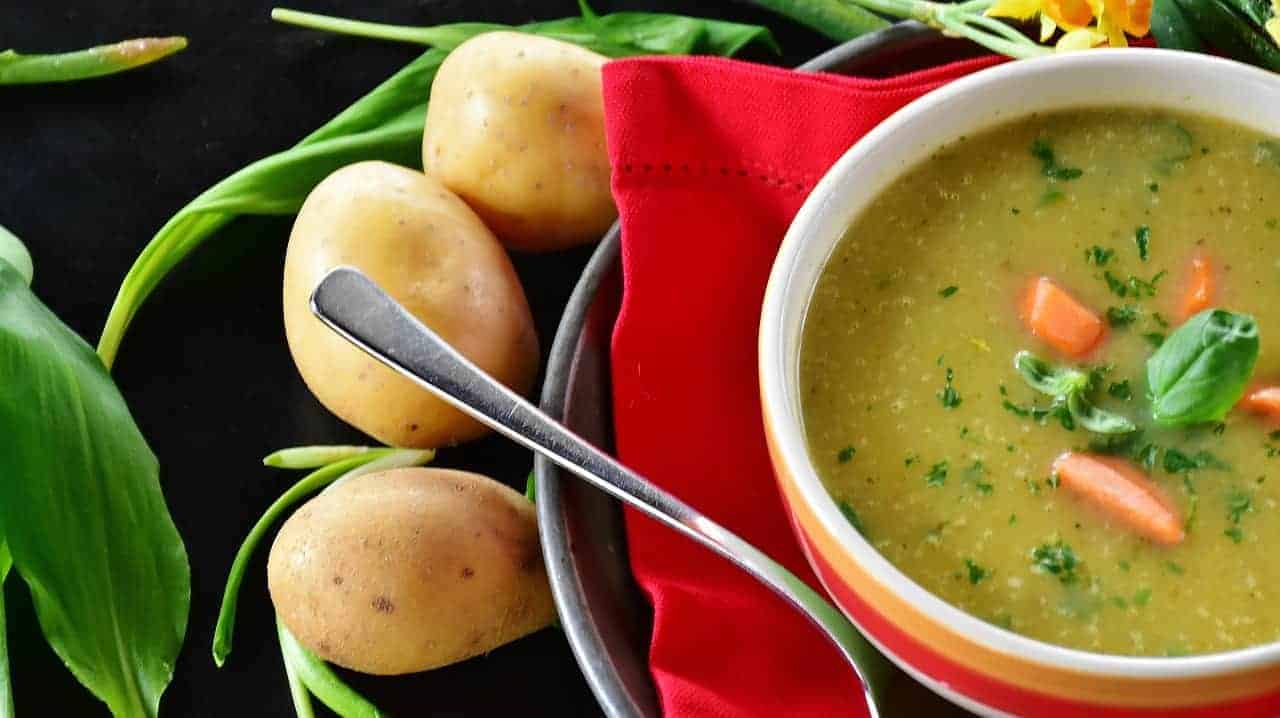
There’s nothing like a good, hearty meal to tide you over on a chilly night. Following on from our bush tucker substitutions, let’s look at how you can razz up your winter dishes with the cold season’s native bush foods.
Winter soups with a native twist
Soups are a winter staple — easy to prepare and even easier to enjoy. It doesn’t take much to dress up a conventional soup with native ingredients. Next time you make a creamy soup, like potato, sweet potato, pumpkin or laksa, try subbing in a few spicy Bloodroot bulbs to add a deep red colour and hot, radish-like flavour.
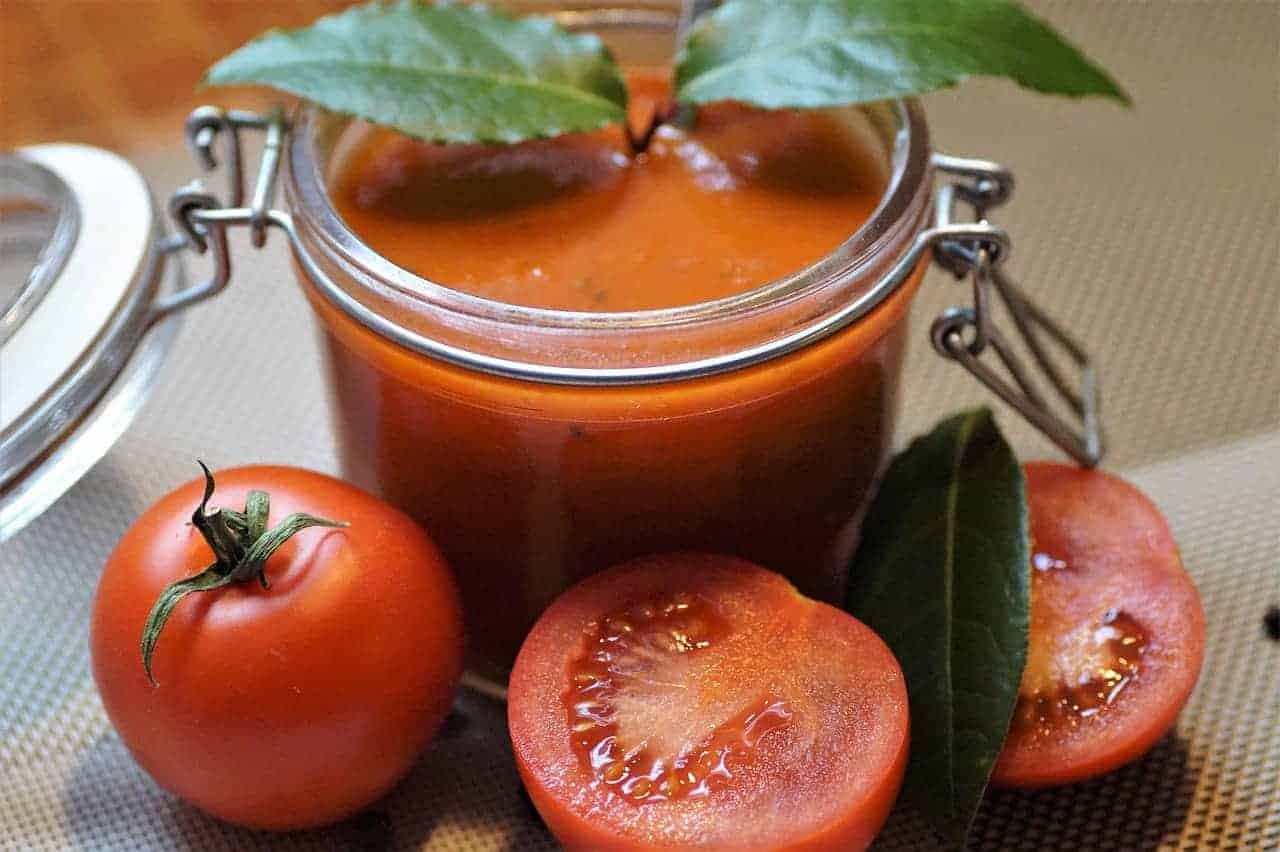
Tomato is technically a summer fruit, but you can find them in grocery stores throughout the year. Try using dried and ground Bush Basil (Plectranthus graveloens) alongside (or instead of) Sweet Basil as a flavouring herb. Photo credit: ivabalk / CC0.
If it’s a mixed vegetable soup on the menu (like beef noodle or minestrone), why not count Bain (Karkalla) leaves or peppery Sea Celery (aka. Sea Parsley) among your ingredients. Garnish with a handful of fresh Sea Purslane leaves for a novel, salty crunch that’s high in vitamin C.
Enhancing red meat with bush fruits
Next time you serve red meat, consider Australia’s fine selection of native in-season plums. Illawara Plum (aka. Plum Pine) pairs exceptionally well with kangaroo and beef, as do Burdekin Plum (aka. Tulip Plum) and the two Davidson plums, Ooray and Mullumbimby (Davidson’s Plum). Each plum species offers a slightly different flavour, varying in sweetness and tartness, but all may be used to make delicious sauces or chunky, chutney-like dressings.
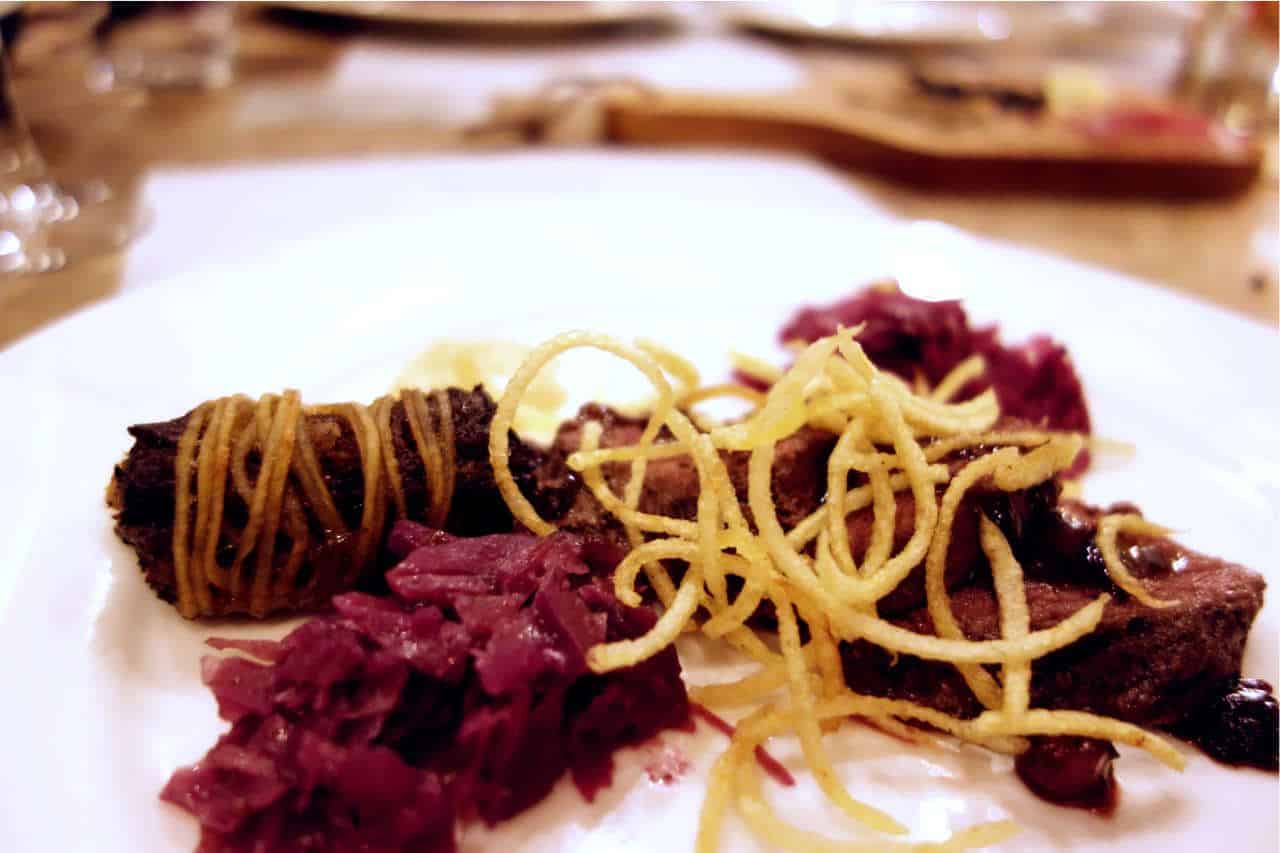
Kangaroo and beef both pair well with Illawarra Plum (Podocarpus elatus). Photo credit: Sandy Lim / Used with permission.
Don’t despair, balcony gardeners! The edible shrubs work here too. It’s easy to make your own pickles from Muntries, Midyim Berries and Tucker Bush Cherries, ready to turn simple roasts and fillet slices into a bushfood delight. Serve on a bed of Warrigal Greens to show you mean business.
Enhancing white meat with sharp flavours
It’s hard to describe the taste of the Small-leaved Tamarind if you’ve never had it before, but suffice to say it’s a delicious addition to white meat. Its sweet, tart and slightly savoury flavour gives it a ‘moreish’ quality, so it’s lucky these trees are prolific fruiters. Use fresh chunks of tamarind flesh to infuse fish or chicken while baking, or turn it into a sauce or chutney to use as a dressing.
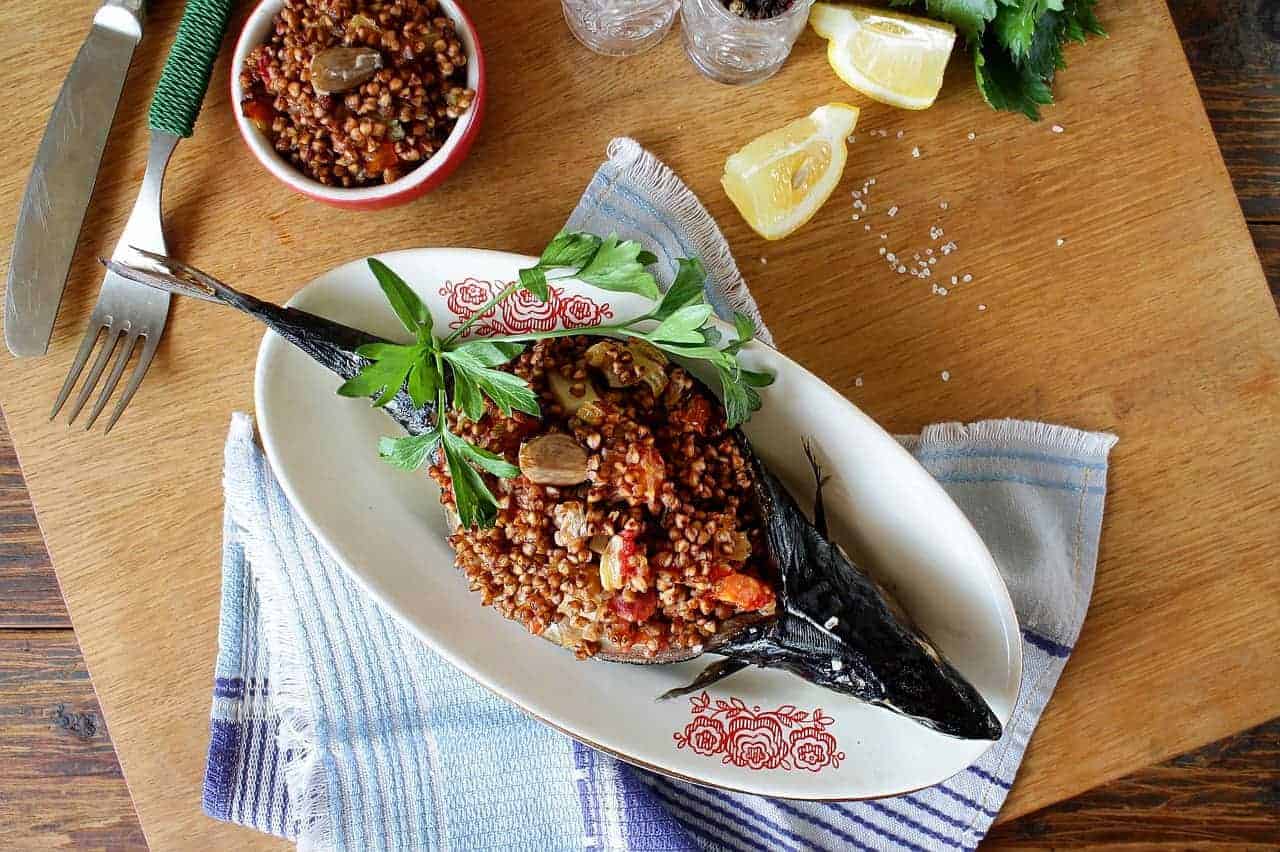
The tangy flavours of a Tamarind fruit or Finger Lime (Citrus australasica) pair well with white meats like chicken and fish. Photo credit: arinaja / CC0.
With salty Seablite, Sea Purslane and Ruby Saltbush, you can bring out the wild ocean and beach flavours in fish and other types of seafood. Limit yourself to a sprinkle if you plan on eating these bushfoods raw. For larger quantities, we’d recommend cooking to help temper any natural bitterness (and oxalate content).
Baked treats with native fruits and nuts
Even if they’re still a bit small, your buttery Sandalwood Nuts should be good to go — especially if you harvested them from around the base of the tree. Chop or crush them up to use in brownies and chocolate fudge, or roast them with honey for an afternoon snack by the space heater.
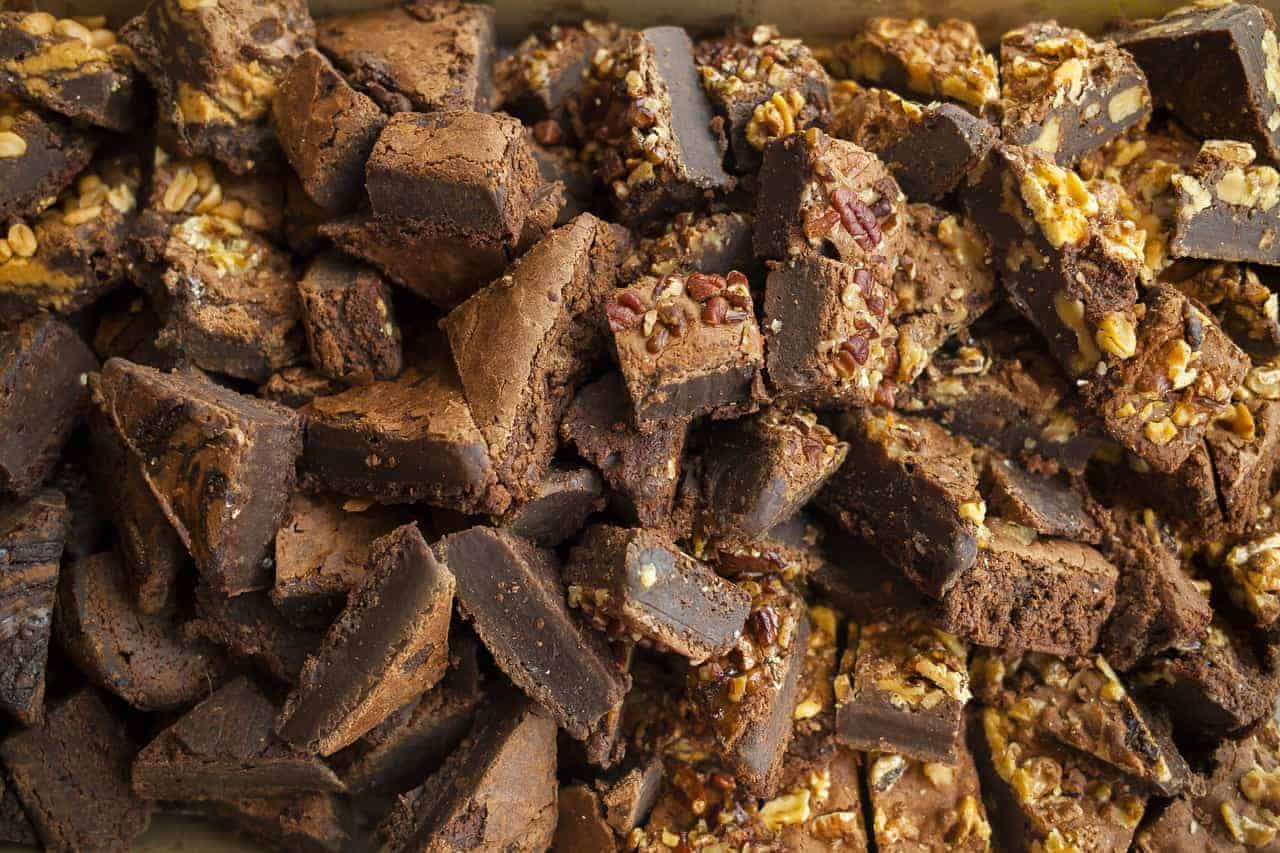
Chocolate and nuts are a match made in heaven. Consider adding Sandalwood Nuts (Santalum spicatum) to your next batch of fudge brownies. Photo credit: 350543 / CC0.
Next time you make a fruit crumble or baked slice, try it with native fruits and berries like Illawarra Plum, Muntries and Blue Tongue. Cut and dried, these sweet bush foods also add distinctive flavours to homemade biscuits and winter granola.
Homemade bush tucker teas and tisanes
Several bushfood species produce leaves that can be used for tea. Our favourites for winter are the Lemon Myrtle, with its unrelenting citrus quality, and the Native River Mint. You can pluck fresh leaves from the plant, and use them as needed, but for easier brewing in the long run, we suggest harvesting a batch of leaves and drying them in the oven.
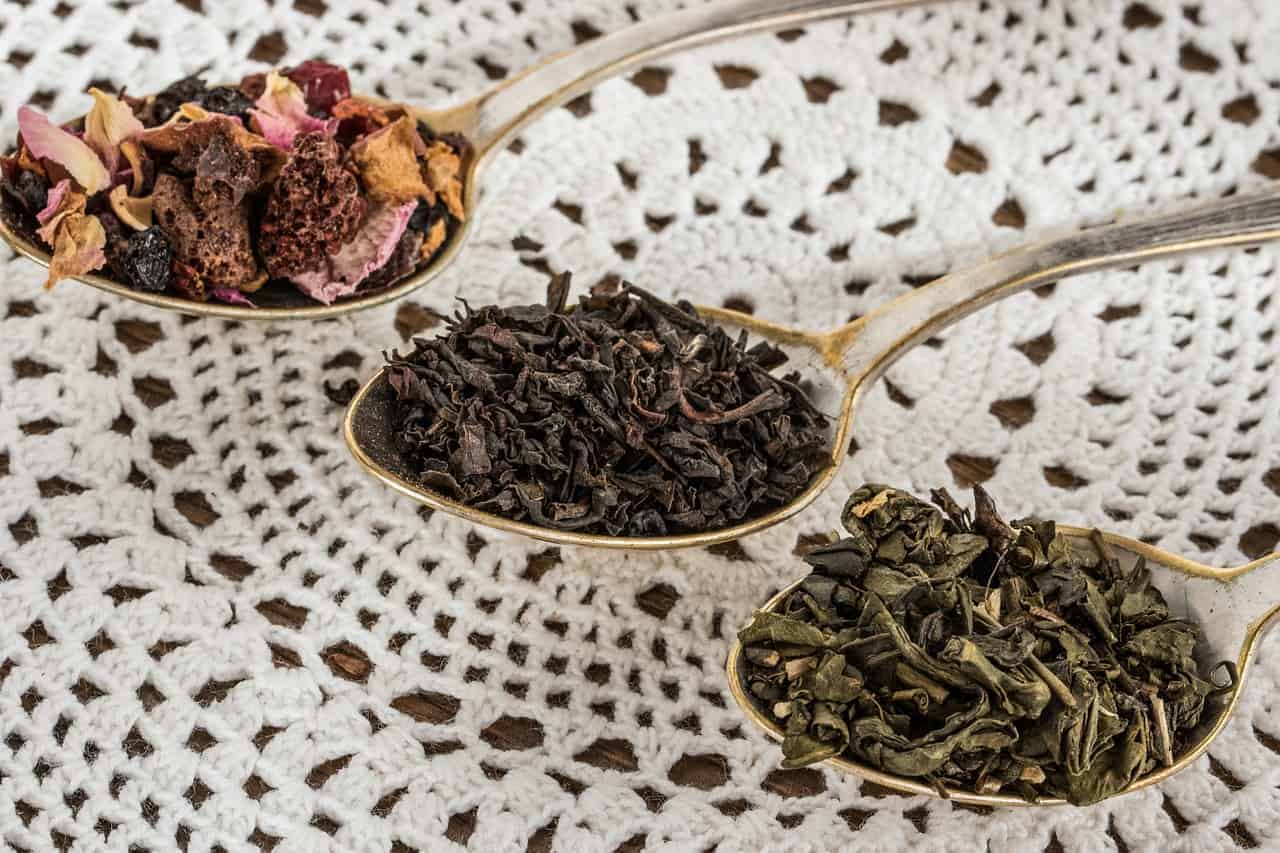
Dry your own bush tucker leaves and fruit pieces for homemade tea. Photo credit: pompi / CC0.
You can do this with fruit and berries too — simply cut them into small pieces then dehydrate or dry in the oven. This concentrates the flavours, ready for steeping in your next cup of tea.
